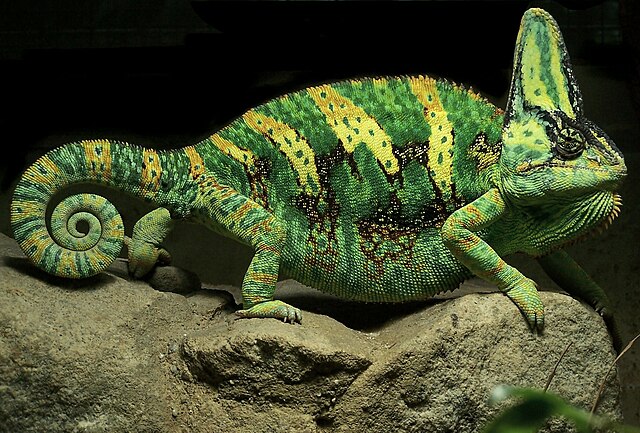Patterns in nature are visible regularities of form found in the natural world. These patterns recur in different contexts and can sometimes be modelled mathematically. Natural patterns include symmetries, trees, spirals, meanders, waves, foams, tessellations, cracks and stripes. Early Greek philosophers studied pattern, with Plato, Pythagoras and Empedocles attempting to explain order in nature. The modern understanding of visible patterns developed gradually over time.
Natural patterns form as wind blows sand in the dunes of the Namib Desert. The crescent shaped dunes and the ripples on their surfaces repeat wherever there are suitable conditions.
Patterns of the veiled chameleon, Chamaeleo calyptratus, provide camouflage and signal mood as well as breeding condition.
Fibonacci number patterns occur widely in plants such as this queen sago, Cycas circinalis.
Beijing's National Aquatics Center for the 2008 Olympic games has a Weaire–Phelan structure.
A pattern is a regularity in the world, in human-made design, or in abstract ideas. As such, the elements of a pattern repeat in a predictable manner. A geometric pattern is a kind of pattern formed of geometric shapes and typically repeated like a wallpaper design.
Snowflake sixfold symmetry
Aloe polyphylla phyllotaxis
Vortex street turbulence
Dune ripple








